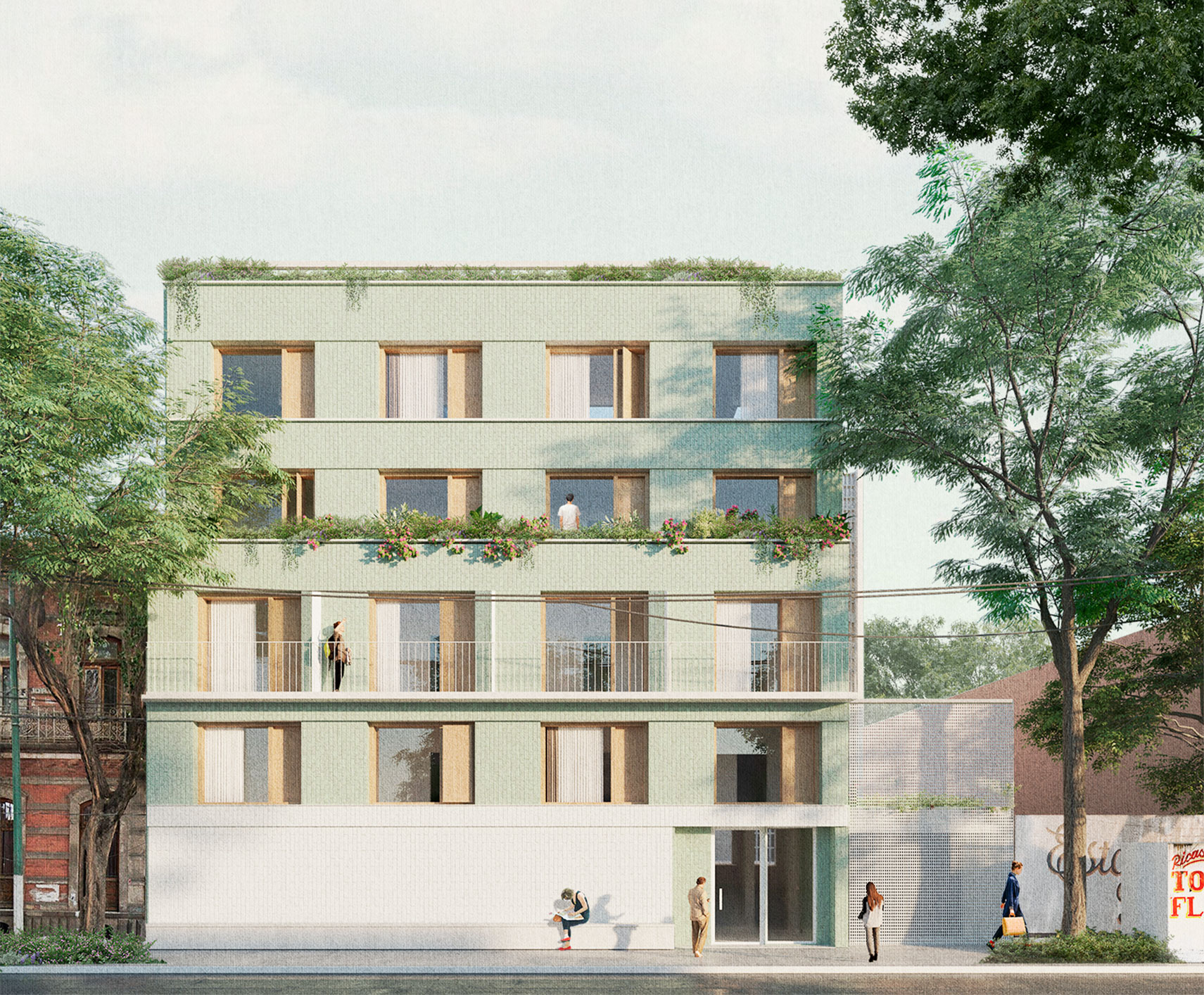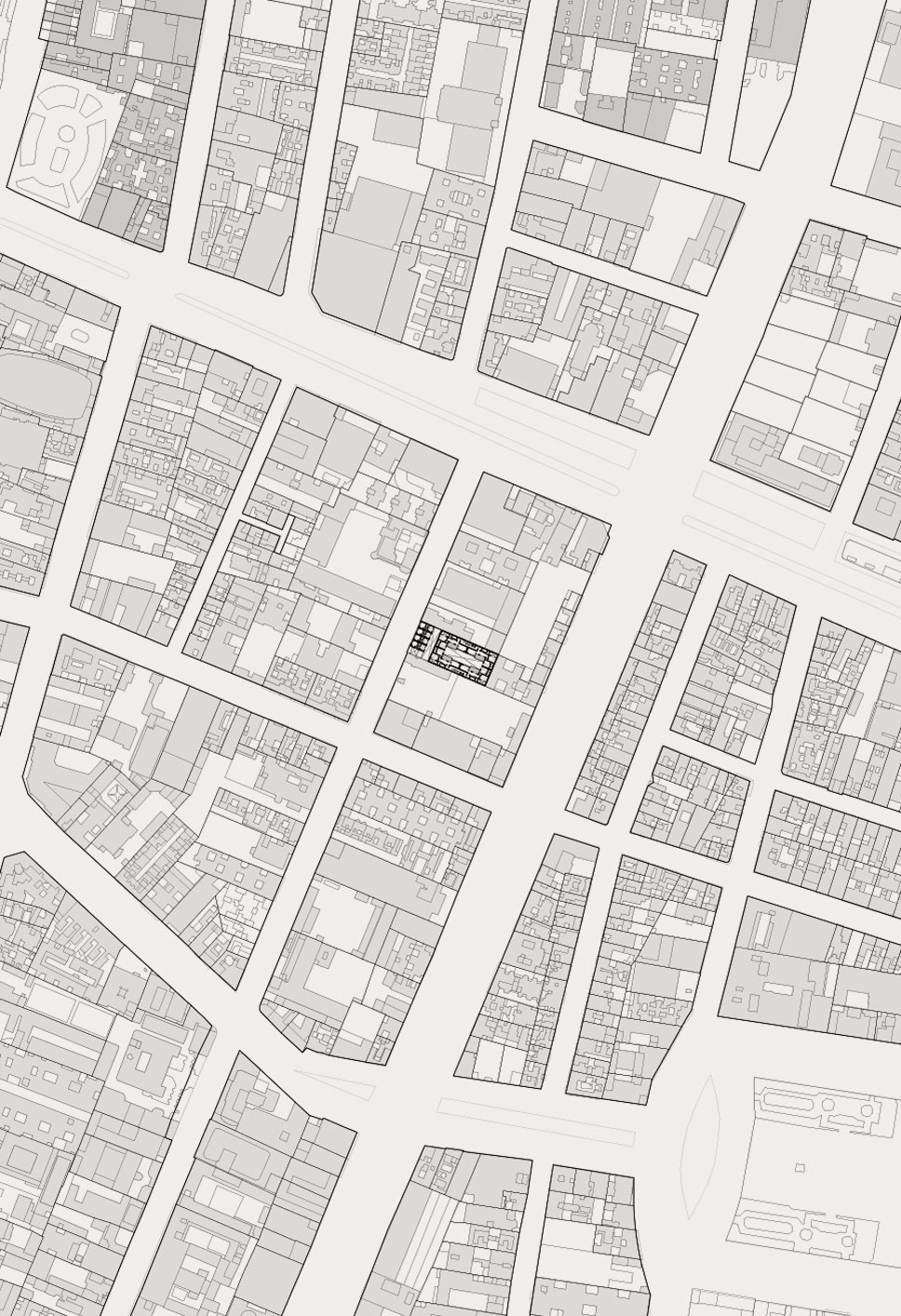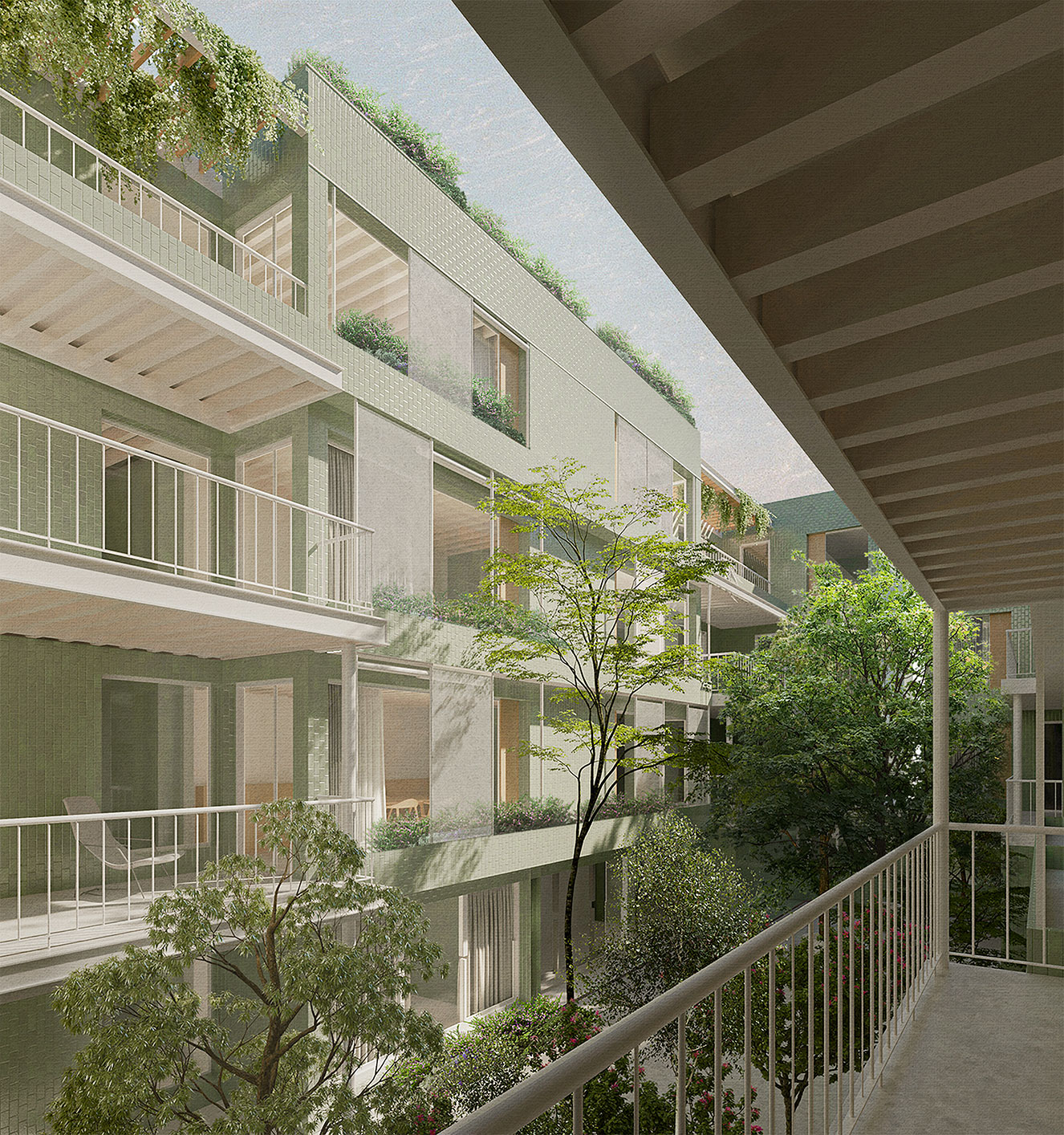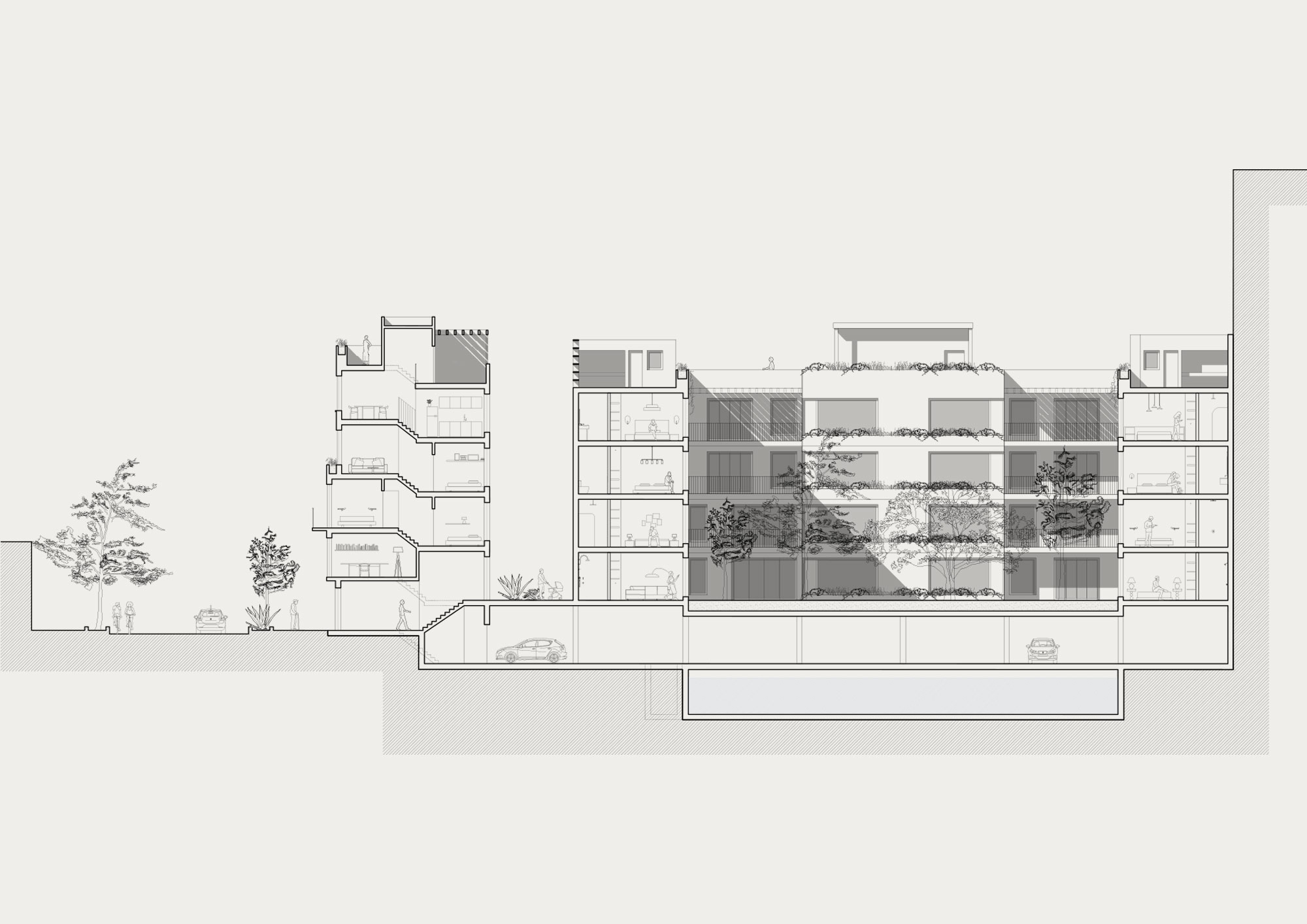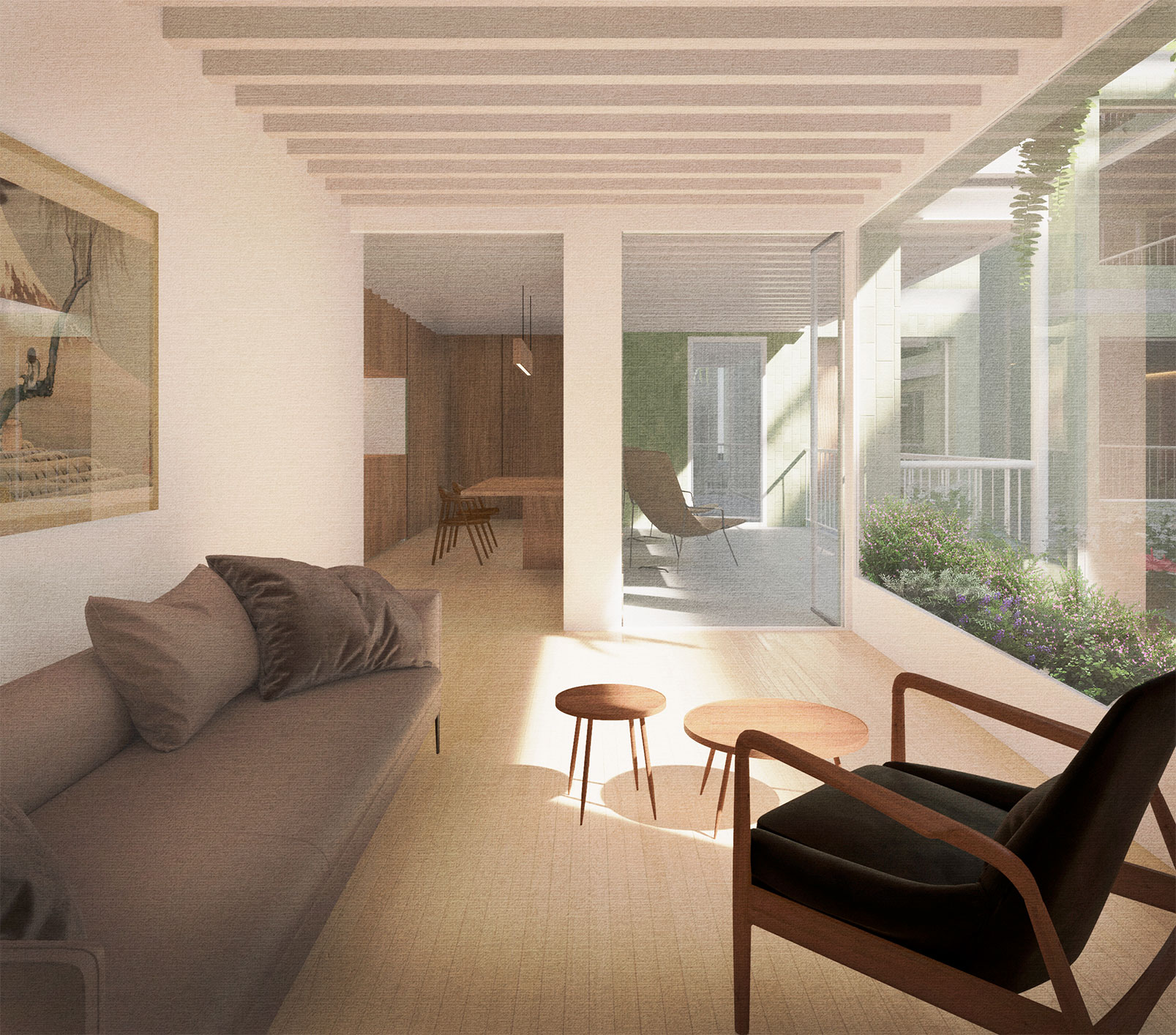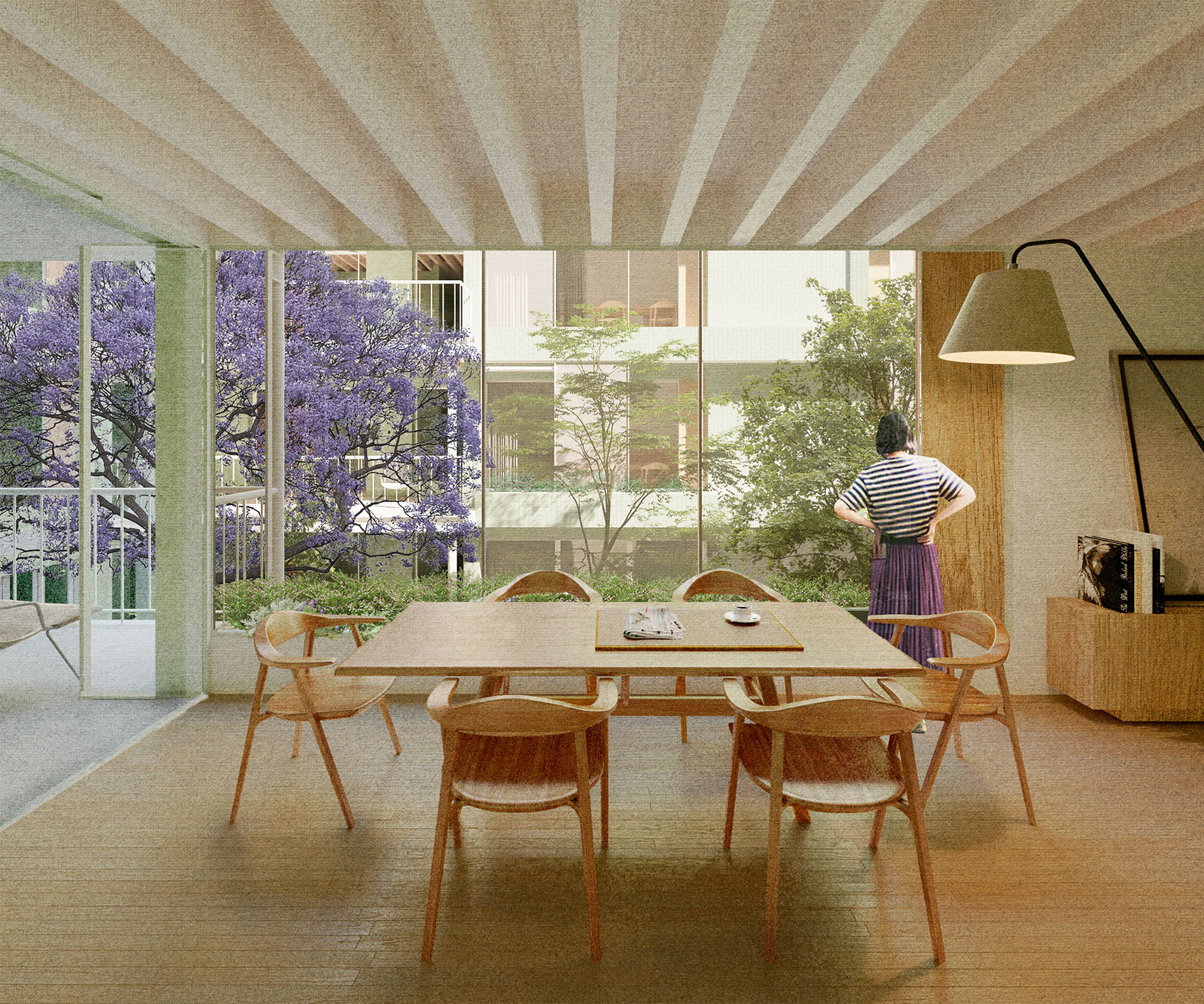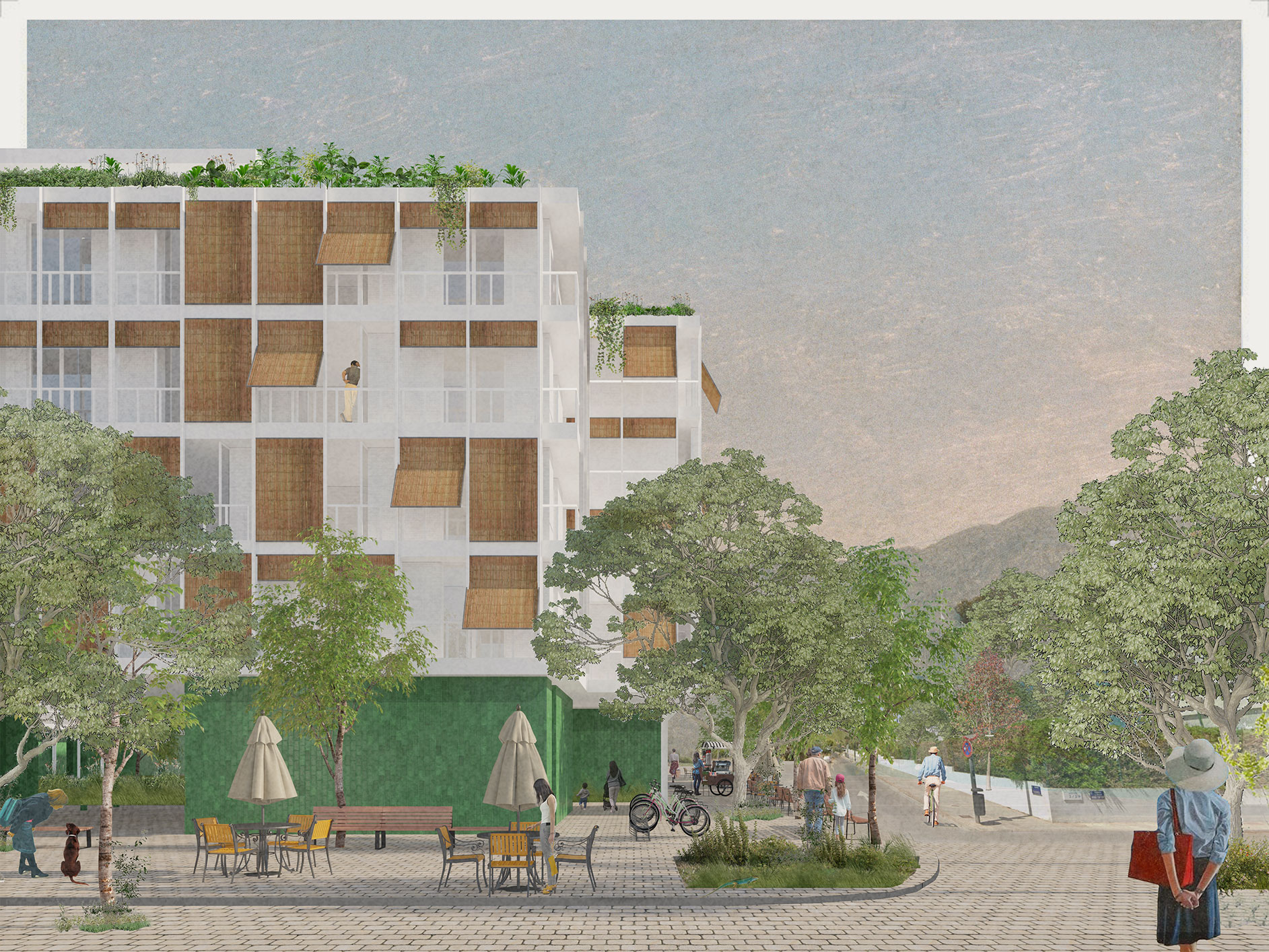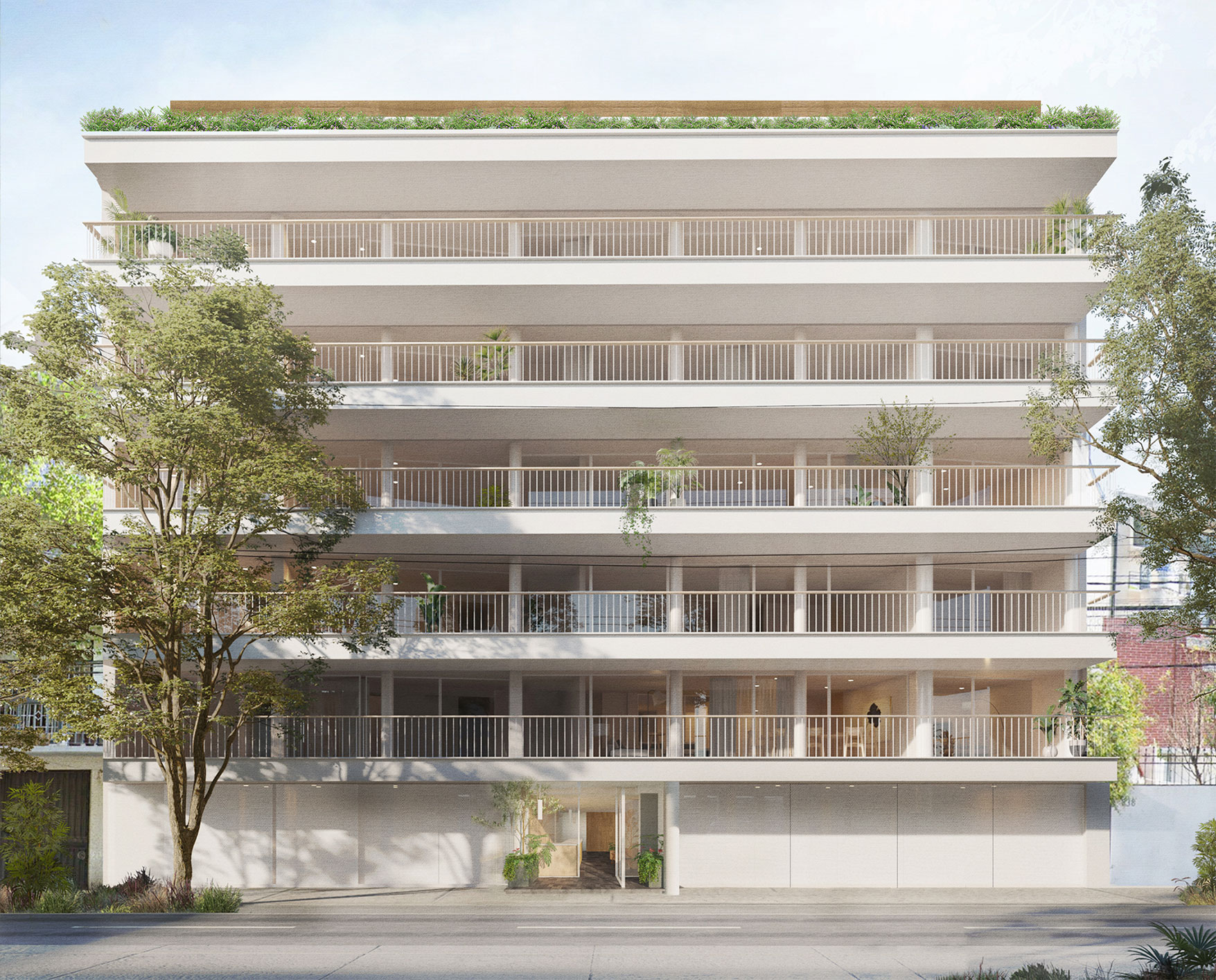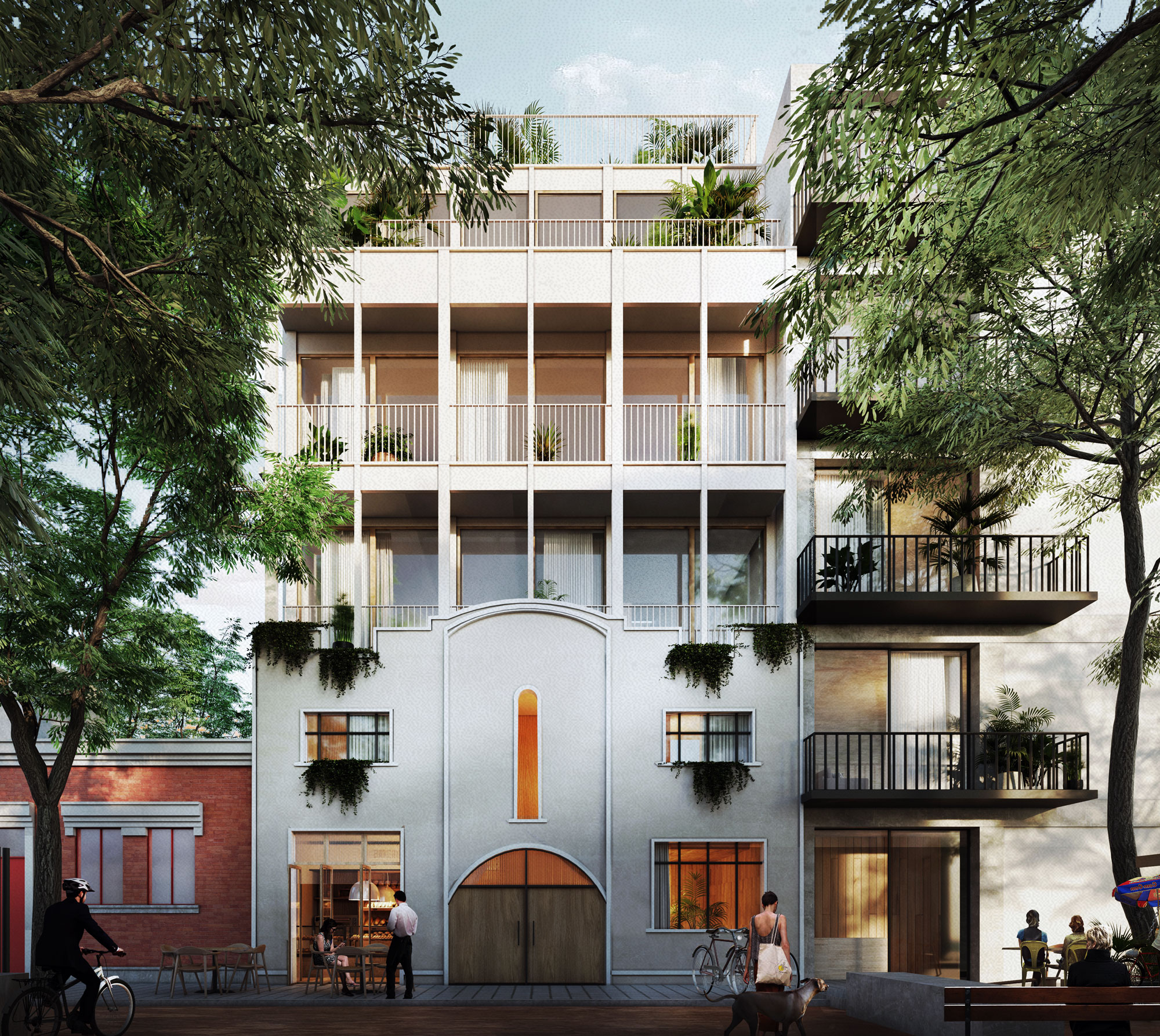Urban housing, San Rafael, Mexico City
2023 –
Location: San Rafael, Mexico City
Type: Housing
Status: Concept design & feasibility
Budget: £2,600,000
In collaboration with Taller de arquitectura sbh
A proposal for infill housing in the San Rafael district of Mexico City consisting of 20 units of 3 dwelling types: 3-bedroom townhouses and 1- and 2-bedroom apartments. As is common within the traditional urban blocks of Mexico City, the site is enclosed on 3 sides, conditioning the building form and the arrangement of the plan. The townhouses face the onto street with the apartments organised around a cental inner courtyard allowing for natural light and ventilation.
The living spaces of the apartments are arranged around a large balcony that faces into the internal courtyard creating a series of interconnected spaces. The central courtyard is planted with trees to help shade the buildings and create privacy, which is furthered by the use of external vertical roller blinds. The building includes a rainwater harvesting system with a cistern that stores 6 months worth of water for the whole building’s use. Photovoltaic panels are included as part of the pergolas on the private and commun roof terraces.
A pre-fabricated steel and timber frame will sit on top of a concrete base (providing off-street parking and the housing the rainwater cistern) whilst the external and internal walls will be constructed using pre-fabricated, pre-insulated panels. The building addresses the two brick buildings that sit next to and opposite the site through the use of brick sized ceramic façade tiles whilst the townhouses step back at third floor level to reflect the height of the parapet of the neighbouring building.
~
Una propuesta de viviendas en el barrio de San Rafael de Ciudad de México que consiste de 20 untis con una variedad de 3 tipos de vivienda: Townhouses de 3 dormitorios y apartamentos de 1 y 2 dormitorios. Cómo en la condición común de las manzanas urbanas tradicionales de Ciudad de México, el sitio está cerrado por 3 lados, lo que condiciona la forma y la organización de la planta. Los townhouse dan a la calle y los apartamentos se organizan alrededor de un patio interior central que permite la entrada de la luz y ventilación natural.
Los espacios habitables de los apartamentos están organizados alrededor de un gran balcón que da al patio interior, creando una serie de espacios interconectadas. El patio central está plantado con árboles que dan sombra a los edificios y crean intimidad, a lo que contribuye el uso de toldos verticales exteriores. El edificio incluye un sistema de recogida de agua pluvial con una cisterna que almacena 6 meses de agua para todo el edificio. Los paneles fotovoltaicos forman parte de las pérgolas de las azoteas privadas y comunes.
Una estructura prefabricada de acero y madera se asentará sobre una base de concreto (que proporcionará el estacionamiento y albergará la cisterna de agua pluvial), mientras que las paredes exteriores e interiores se construirán con paneles prefabricados y preaislados. El edificio se asemeja a los dos edificios de ladrillo que se encuentran al lado y enfrente del predio mediante el uso de azulejos de cerámica en la fachada, mientras que los townhouse se retiran en el tercer piso para reflejar la altura del pretil del edificio vecino.
